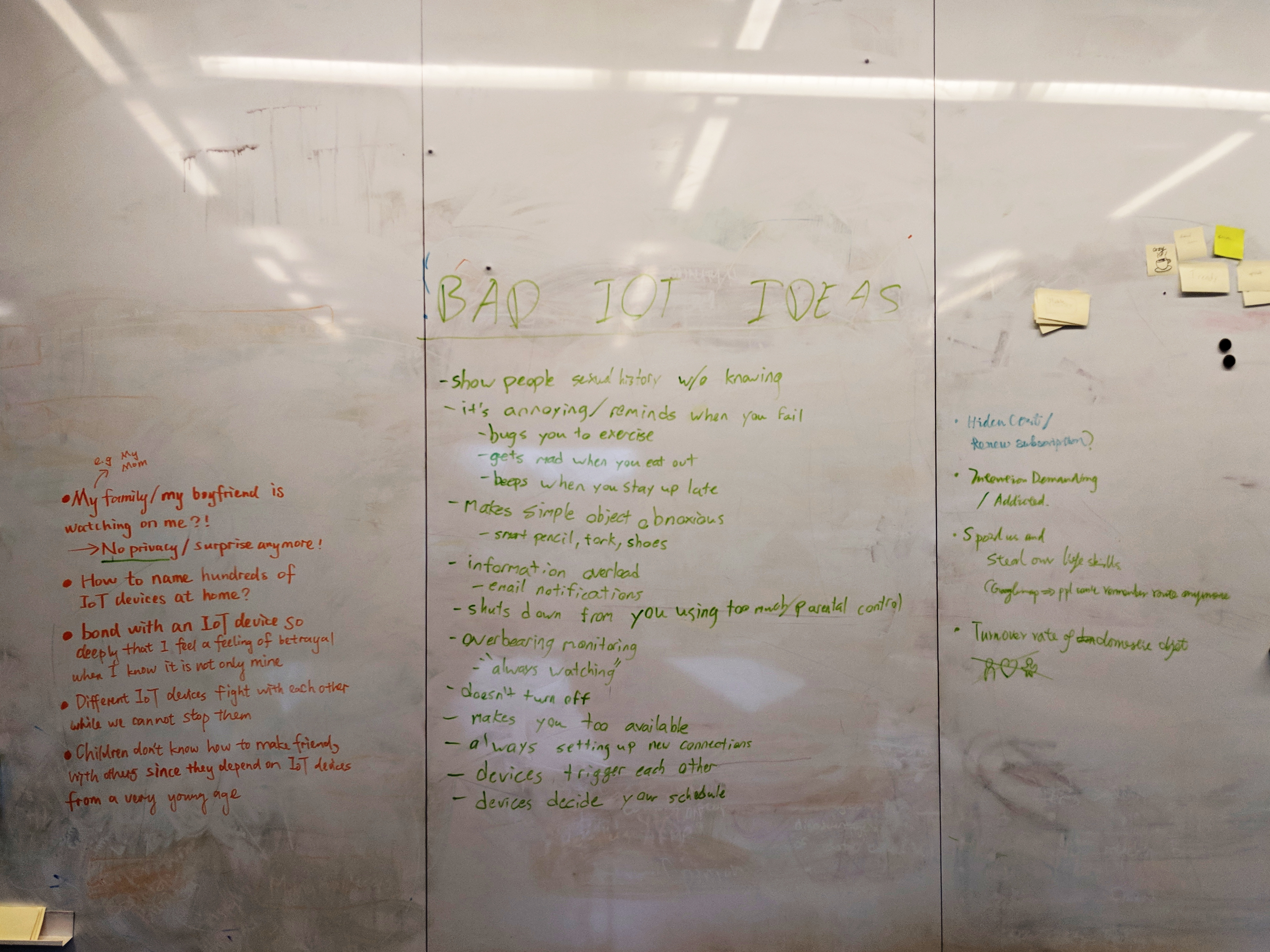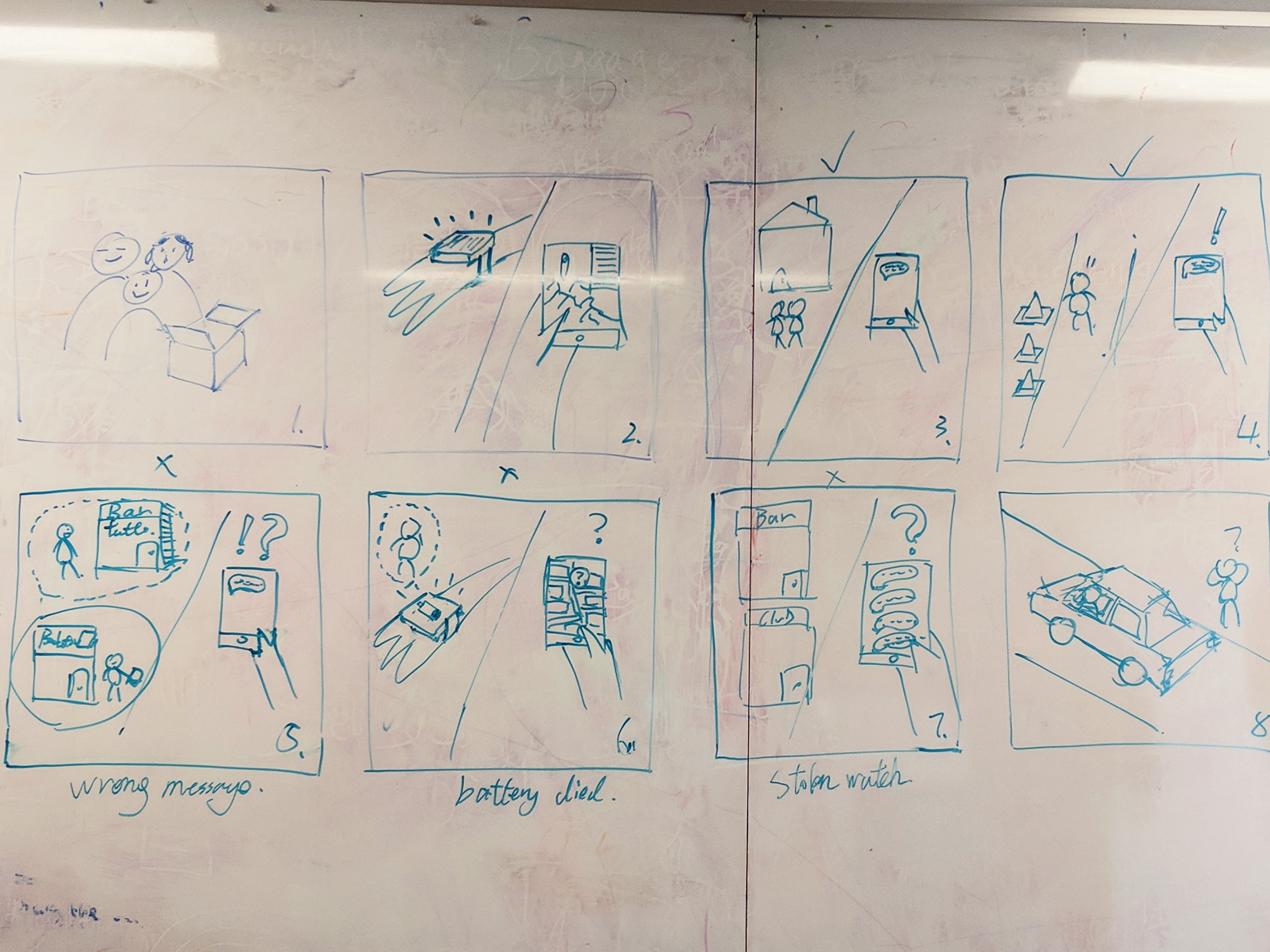Recommendations
As IoT becomes more and more the norm, consumers will become more excited about the prospect of having access to live data. Consumers will be able to monitor their homes, their children, their cars, their ovens, the status of their laundry, all from remote locations. However, there arrives a moment where the information provided is too much to handle. But because it IS available and, technically speaking, it IS helpful, consumers will feel a need to be responsible and adopt the technology in the hopes of being a more aware individual.
The problem we have uncovered and we caution against is the availability of too much information. When a parent can constantly track where their kids are, there is a decent likelihood that they will. This information overload will lead to stress and anxiety that did not exist before IoT.
We recommend the following to avoid this:
- limit the provided information's availability
- only provide pertinent information
- avoid frequent notifications

